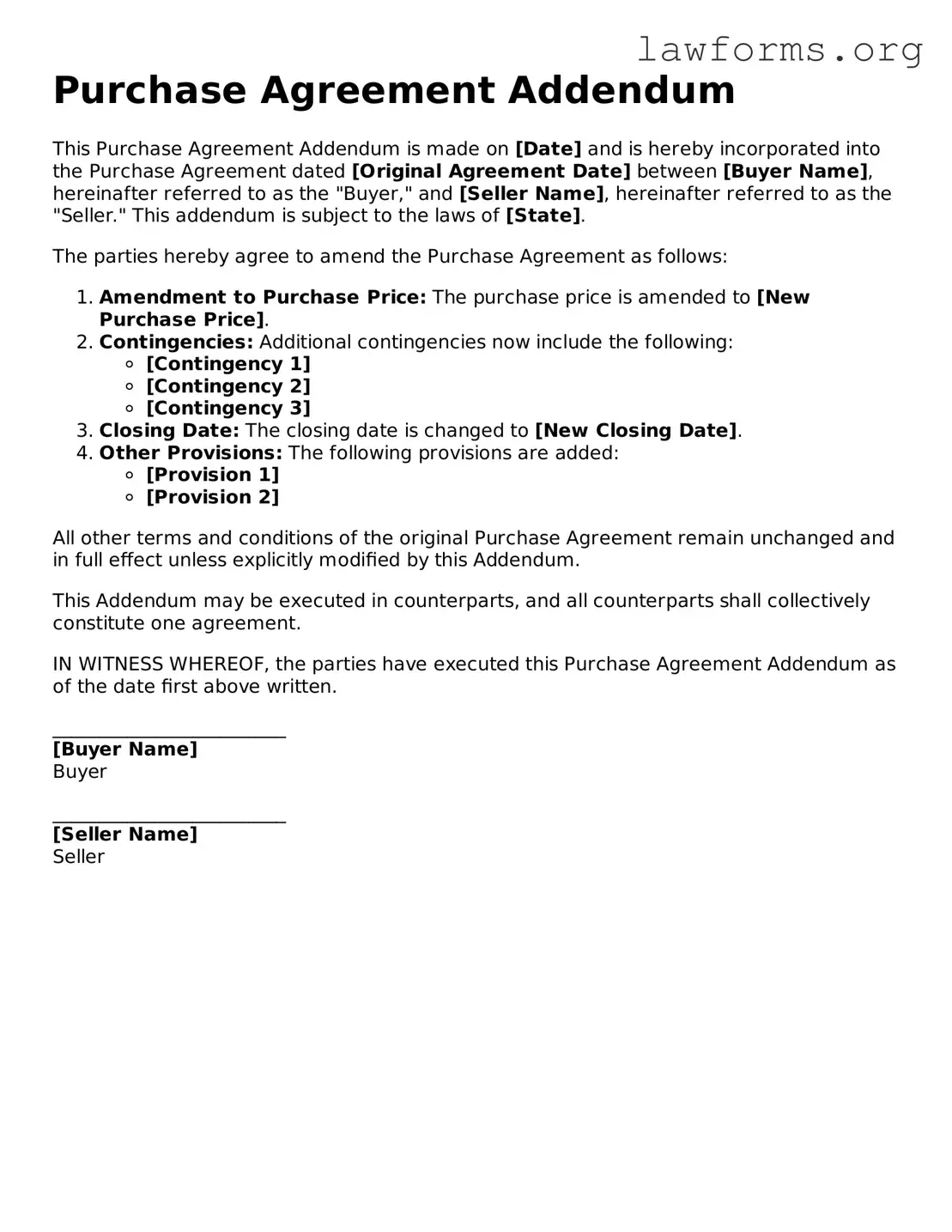Purchase Agreement Addendum
This Purchase Agreement Addendum is made on [Date] and is hereby incorporated into the Purchase Agreement dated [Original Agreement Date] between [Buyer Name], hereinafter referred to as the "Buyer," and [Seller Name], hereinafter referred to as the "Seller." This addendum is subject to the laws of [State].
The parties hereby agree to amend the Purchase Agreement as follows:
- Amendment to Purchase Price: The purchase price is amended to [New Purchase Price].
- Contingencies: Additional contingencies now include the following:
- [Contingency 1]
- [Contingency 2]
- [Contingency 3]
- Closing Date: The closing date is changed to [New Closing Date].
- Other Provisions: The following provisions are added:
- [Provision 1]
- [Provision 2]
All other terms and conditions of the original Purchase Agreement remain unchanged and in full effect unless explicitly modified by this Addendum.
This Addendum may be executed in counterparts, and all counterparts shall collectively constitute one agreement.
IN WITNESS WHEREOF, the parties have executed this Purchase Agreement Addendum as of the date first above written.
_________________________
[Buyer Name]
Buyer
_________________________
[Seller Name]
Seller
